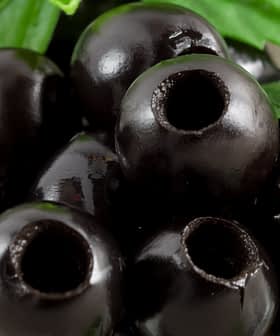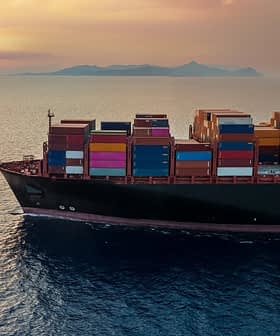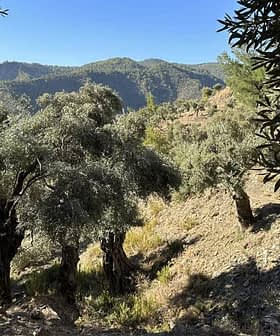E.U. Removes Tariffs on Chilean Olive Oil Imports
An interim free trade agreement between Chile and the European Union has removed tariffs on the first 11,000 metric tons of Chilean olive oil exports to the E.U., creating new opportunities for Chilean producers to sell their products in Europe. While the agreement benefits Chilean olive oil exports, European exporters do not see significant advantages, and the country’s olive oil production is expected to improve in 2025 following a drop in 2024 due to extreme weather conditions.
An interim free trade agreement between Chile and the European Union has come into force, removing tariffs on the first 11,000 metric tons of Chilean olive oil exports to the 27-member bloc.
The interim agreement is expected to remain in place until the 27 E.U. member states approve a more comprehensive Advanced Framework Agreement.
“The existence of a framework treaty is very beneficial for Chile,” José Pablo Illanes, the general manager of award-winning producer and exporter Las Doscientos, told Olive Oil Times.
See Also:Rising Olive Oil Imports Contribute to Spain’s Trade Deficit with Argentina“This will allow Chilean companies to promote and sell their products more competitively to different countries in the European community,” he added. “Europe can become an interesting market for Chile.”
According to data from Chile’s national customs service, the country exported 17,502 metric tons of olive oil in 2023, valued at $117 (€108) million.
The United States (5,561 tons) and Brazil (5,437 tons) were the two leading destinations, followed by Spain (3,354 tons), Italy (1,308 tons) and Portugal (1,131 tons). Separate data from Eurostat show the rest of the E.U. imported about six tons of olive oil from Chile in 2023.
While most Chilean olive oil exports to Spain, Italy and Portugal are sold in bulk to large bottlers, who blend the oil and resell it under their brands, ChileOliva general manager Gabriela Moglia said the agreement opens new opportunities for producers to sell individually packaged olive oil elsewhere in the bloc.
“Non-producing countries of olive oil with high purchasing power such as France, Germany and Belgium demand a high quality product, which is in line with the Chilean offer,” she said. “Therefore, good opportunities could be generated to market Chilean olive oil in these countries with a zero percent tariff.”
While the agreement removes 99.9 percent of tariffs on E.U. exports to Chile and safeguards 216 European geographical indications, it offers little additional benefit to European olive oil exporters.
Tariffs on E.U. olive oil exports were gradually eliminated under a 2003 trade agreement between Chile and the E.U.
Eurostat data show the E.U. exported 417 tons of olive oil valued at €2.9 million to Chile in 2023, virtually all of which came from Spain (315 tons) and Italy (101 tons).
Despite the news, Illanes said Las Doscientos, which exports individually packaged olive oil rather than bulk, does not plan to significantly change its market strategy.
“The Brazilian market continues to be our priority, and it will not change in the short term,” he said. “But we believe there may be alternative niches [in Europe] that will pay for a better, high-quality extra virgin olive oil and Chile can be a supplier.”
Fernando Carrasco Spano, the chief executive of Olivos Ruta del Sol, said the award-winning company will use the free trade deal to test the higher end of the European olive oil market.
“The removal of tariffs with the European Economic Community is great news for our company, because it allows us to enter the Italian, Portuguese and Spanish super high-end markets, initially with bulk and then with packaged product under our brand,” he said.
“It will allow the extensive number of European high-quality consumers to have a novel alternative of fresh olive oils each year in May and June before the European harvest,” Carrasco Spano added.
José Manuel Reyes, the commercial director of Agricola Pobeña, said the agreement would provide the award-winning company with challenges and opportunities.
“Currently our presence in the E.U. markets is low, these agreements will facilitate the possibility of expanding the brand, by exporting with lower additional costs,” he said.
Carrasco Spano, Illanes, Moglia and Reyes said that the 11,000-ton limit is high enough given the country’s production levels and exports to other countries in the Americas and Asia.
Before the trade deal was signed, a 2024 report from Chile’s Office of Agricultural Studies and Policies identified the E.U. as a strategic market for increasing olive oil production and exports.
“In analyzing the European market for Chilean olive oil, current market conditions and the national situation could present a significant opportunity for investment in expanding the planted area of olive trees in Chile,” the report said.
The report also identified Australia, Brazil, China and Japan as markets with significant opportunities to increase Chilean exports.
Olive oil production in Chile dropped to 15,000 tons in 2024 due to extreme heat in the north and torrential rain in the country’s center. Moglia said the situation in the olive groves is better ahead of the 2025 harvest.
“We expect a better season than last year,” she confirmed. “We hope that it will continue like this and that there will be no climatic difficulties.”
With its olive groves in the Maule Valley, about three hours south of Santiago, Illanes confirmed that the situation looks promising for Las Doscientos, with the harvest set to begin in the coming months.
“We have had a good spring and summer with a calm, stable climate without significant variations,” he said. “There was a good fruit setting, and the olives are of a relevant size.”
“Of course, this is like a marathon,” Illanes added. “We are at kilometer 30 of the 42. We are doing well until kilometer 30 and in the final stretch.”
Carrasco Spano agreed and said Olivos Ruta del Sol, which grows olives in the central Chilean region of Valparaíso, expects a superior harvest in 2025 than in 2024.
For his part, Reyes said Agricola Pobeña, which cultivates 400 hectares of olive groves in the central O’Higgins region, also expects a favorable harvest.
“This winter was particularly rainy, which allowed us to accumulate enough water for the season,” he said. “We trust that this harvest will take place without weather events that could affect quality, as occurred in previous years.”







